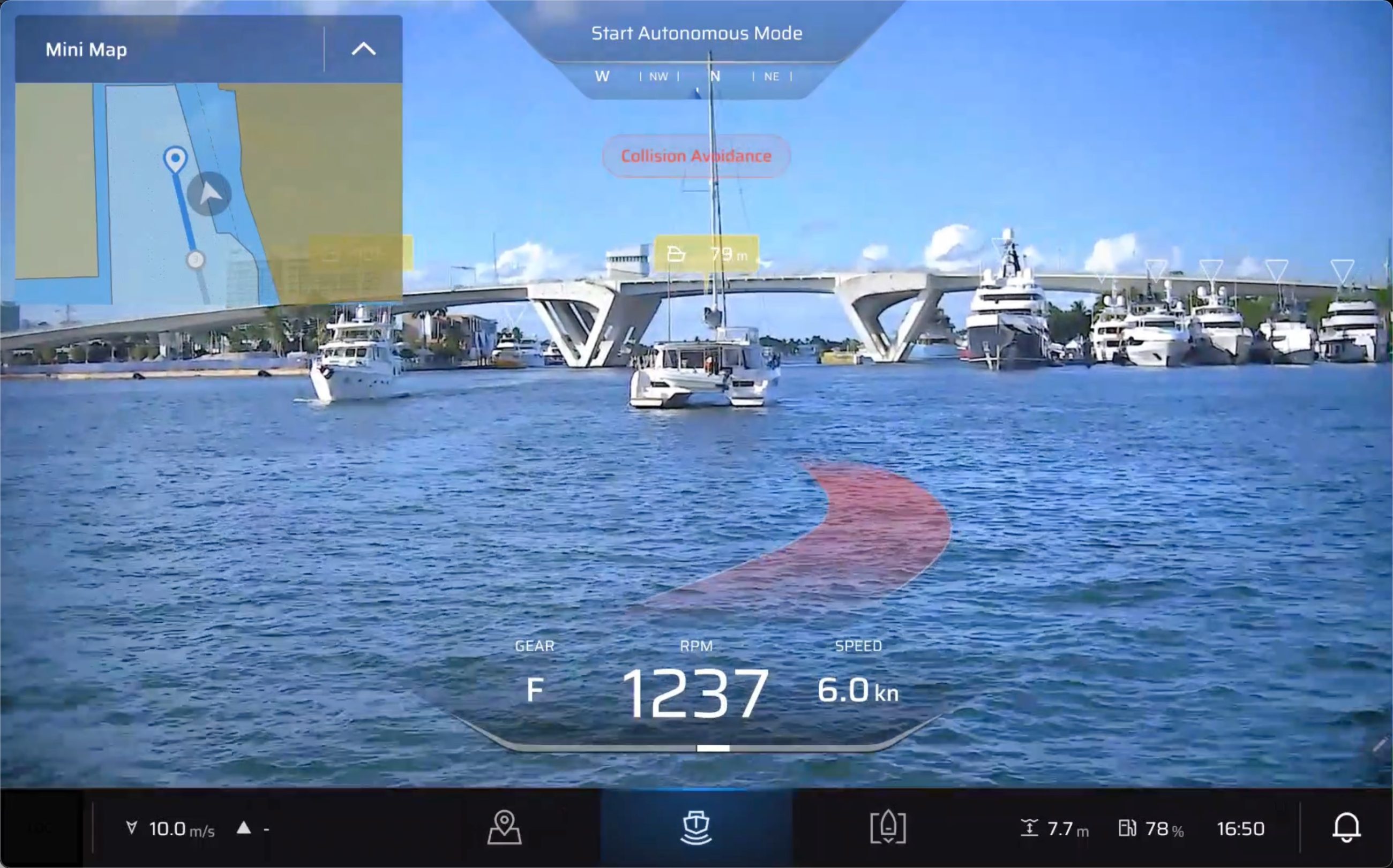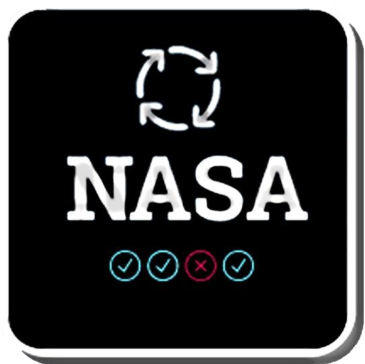Getting Technical: The tech future is muddled

Editor’s Note: I have begun writing a monthly column in Soundings Trade Only covering all things technology. I’ll be running those columns here as well. I welcome all feedback on those pieces and a lively discussion. Feel free to let me know when you think I’m wrong. I welcome the feedback! Ben S.
Advancements keep coming in a number of areas, but nothing yet seems poised to wholly revolutionize boating.
Will this be the year of autonomy? Will it be the year of electrification? Maybe the year of hydrogen? Or since it’s so popular everywhere else, the year of AI?
Sadly, I’m not sure I can make a bold prediction about the biggest trend to come. But I can tell you about the trends that have emerged recently, and about what I think we might learn about them next.
Autonomy
Mention autonomous boating, and you just might evoke passionate feelings. Some people believe autonomy has no place in the art and skill of boating, while others are intrigued by the technology, particularly how it can make boating safer and more accessible to newcomers. One thing many boaters may be able to agree on is that autonomous operation of boats in varying circumstances isn’t easy. In fact, it’s a herculean task to safely operate a boat with varying waters, weather and humans operating boats all around you.
For several years now, we’ve seen previews of different degrees of autonomy in boating. But we haven’t yet seen a fully autonomous vessel control system in production and in the hands of boaters. At least for the companies developing these systems, the panacea is a system that can take the boat out from the dock, get to the cruising grounds and cruise safely back to the dock.
In other areas of our lives, autonomy means things like robotic vacuums. The first Roomba began patrolling our living rooms more than 20 years ago, and it’s still routinely stymied by socks, cords and nearly any other piece of daily life. Tesla has been promising a self-driving feature since its launch, but so many promised dates have come and gone, many of us have stopped paying attention. Most recently, GM’s Cruise autonomous transport division pulled its fleet of self-driving cars off the road after a grisly accident and numerous other incidents.
Now consider the many challenges facing autonomous systems on the water. Boats don’t have brakes. They don’t operate on well-defined roads. They’re often used at night with minimal illumination. Still, after several rides aboard Avikus’ demo boats, I think there’s reason for optimism. Avikus is a subsidiary of HD Hyundai, and its systems already operate on Hyundai’s oceangoing cargo ships. My demo rides have left the dock, cruised through crowded Florida waterways, and safely returned. The demos were nothing short of jaw-dropping. At the dock, the system patiently waited while other boats transited the area, and then the system safely docked with a minimum of fuss.
Even so, there are still several major questions to be answered. Primarily, those questions are centered around edge cases and recreational demand. The demo’s waters weren’t especially challenging, nor was the weather. The water was deep. Examples from automotive autonomy show it’s often the unexpected challenges that stymie these systems. Teslas, for instance, crash into emergency vehicles that are stopped on the side of the road with their lights activated.
In addition, many boaters take to the water, at least in part, to enjoy the actual act of boating. Acquiring experience and building seamanship skills is, at least for me, inextricably linked with boating. Will a system that negates the need for these skills succeed? Many of us have accepted autopilots and joystick control systems to make boating easier, but the demand for autonomy is likely to differ.
Electrification
Electricity on boats has been a hot topic for quite some time. It includes generator replacement systems, higher-voltage house banks, new battery chemistries and electric propulsion. The most talked-about facets are propelling boats with electric motors, and on-board electricity stored in large battery banks.
In select applications, electric propulsion has already gained a strong foothold with limited downsides. Low-horsepower outboards, like on the stern of a tender, are an example of electric motors proving sufficiently powerful, highly reliable, quiet and simple to operate. The same can be said for electric motors used as auxiliary engines on small- to medium-sized sailboats. And electric motors have found an important niche on lakes and waterways that prohibit traditional propulsion.
Those successes notwithstanding, at higher horsepower and for longer ranges, electric propulsion typically suffers when compared to internal combustion engines by cost or by range.
As if to demonstrate the complexity of marine propulsion, Yamaha Motors was in the process of acquiring marine electric motor pioneer Torqeedo at the same time it was previewing a hydrogen-fueled outboard at the Miami boat show. The press release announcing the hydrogen motor preview stated that in order to achieve carbon neutrality with marine products, “the company is promoting a multidirectional development approach, looking to other new energy sources and technologies in addition to its electrification efforts.”
That announcement followed ICOMIA’s decarbonization report at Metstrade last year. That report concentrated on boats 79 feet and smaller, and concluded that sustainable combustion fuels are the best path forward for decarbonization by 2035. The report also emphasized the need for a multifaceted approach to meet the needs of boaters while improving boating’s carbon footprint.
For all these reasons, I do not think this will be the year that electric propulsion fully takes hold in the marine marketplace. On the other hand, I’m hopeful that we will begin to see lanes of development for reduced- or zero-carbon options for a broader range of the boating market.
Artificial Intelligence
Many existing technologies that underlay AI have been around for quite some time. Machine learning, big data analysis, natural language processing and machine vision are already familiar. Last year, journalists (and many others) feared that generative AI was coming for our jobs. It’s the flavor of artificial intelligence that produces content based on inputs, and that is quite suddenly everywhere. It can write articles, create images, perform research and so much more.
In boating, I don’t expect that generative AI will be the first technology to make an impact. Instead, I expect some of the other technologies under the general umbrella of AI to be the most impactful the soonest.
One example is a navigation app called Ditch. It uses AIS data to analyze vessel traffic and routes. That data is then used, alongside more traditional chart and sounding data, to generate “routes with local knowledge.”
Ditch is billed as the first navigation app to utilize AI. Imagine AI processing AIS tracks to recognize that many vessels are turning back when transiting an inlet. Or that vessels are suddenly stopping at the same location. That data might be indicative of shoaling conditions and would be a significant contribution to safe navigation. Ditch is likely the first of many implementations of the technology to aid boaters.
Even so, AI is not poised to take over boating (or journalism) this year. But as with the other trends, we may see significant advances. And yes, I look forward to taking a look back at this column at the end of the year and seeing how badly I missed the mark.
This article was originally published in the March 2024 issue of Soundings Trade Only.













Just visited your site after two year break. It looks great!
Thanks
JP
Ben-
You do a great job of providing well informed information on a broad array of topics. I always enjoy your articles and keep copies for my own projects. One of my great concerns about focusing on new technology is that it is leaving behind a lot of folks who are still using MFDs from 8-15 years ago for navigation and safety at sea. Just for fun I recently conducted a search on YachtWorld for a line of well known trawlers in the Pacific North West. I always check out the electronics installed and was appalled to see that every one of the available boats had kit that was at least 8-10 years old.
Never mind AI and H2 propulsion, there is a huge number of vessels out there in need of a make over just to bring them into the range of current electronics capability. The issue is affordability and the lack of perception of just how limiting the old gear is relative to even the most basic Solid State Radars, Chirp Sonar, Fish Finder, SO AIS transponders and most recently the advent of Starlink for mobile satcom at very reasonable cost.
It seems to me that in addition to looking at the future of boating, it would be good just to get the many boats that are under equipped or running gear no longer supported to consider an update to the most recent basics.
You have gone to great lengths to explain the issues around LiFePo batteries, but I have a dear friend who purchased a LiFePo “kit” from China and was attempting to put that battery in parallel with his existing AGM and charge the mess with his stock sailboat engine alternator!! I intervened and rewired his system into an isolated AGM + LiFePo system with Solar charging of the Li battery and shore / Alternator charging of his AGM. He can run his systems off either battery but never both sharing the same loads.
There is SO MUCH that so many still do not comprehend or appreciate regarding the electronics, battery technologies and propulsion options. There will always be the bleeding edge early adopters and those well schooled in the topics are to be commended for the effort and finances. But we have so many that still need to be brought along with the basic proven gear that is already out there.
Keep up the great and informative articles – you do a great job of explaining all sides of a topic. For us retired engineers and DIY nerds who are just good at that stuff get a great education in seeing all sides of an issue. Thanks tons
David,
Thank you for sharing your thoughts and feedback. I often worry that my position leads to a warped view of the world. In fact, I worry about it enough that I started doing installation work on boats on a regular basis. Getting my hands dirty (and cuts from fiberglass) helps me keep a perspective of what boaters encounter and the “real” world of boat technology. I have stacks of 20+ year old equipment I’ve removed to prove it. You’re no doubt correct that the average age of operational electronics is much older than what we see represented on Panbo.
As to your kind words about the coverage Panbo provides, I just want to say thank you. I often feel that I’m writing to the ether and I struggle to measure the effectiveness of my writing. Examples like your friend cause me concern that I’m not all that effective. But, words like yours are a tremendous reward for that effort.
Thanks again!
-Ben S.
I’m delighted that Ben S has started posting his Trade Only column here, and it got me digging around for the still relevant marine tech features he previously wrote for the Trade. Enjoy:
Current Ideas
VoltSafe targets marina operators with a new way to deliver and monitor shore power.
DEC 18, 2023
https://www.tradeonlytoday.com/post-type-feature/current-ideas
Powerful Ideas
Advances in battery technology are making generators less of a requirement on board
APR 18, 2023
https://www.tradeonlytoday.com/post-type-feature/powerful-ideas
Making the Switch
Expect to see more and more digital switching systems on new and refitted boats alike
APR 25, 2022
https://www.tradeonlytoday.com/post-type-feature/making-the-switch
Switched On
The benefits of digital switching include convenience, shorter build times and trimmer weight. Tech training will have to step up
MAY 1, 2020
https://www.tradeonlytoday.com/post-type-feature/switched-on
A New Way to Network
The Internet of Things, which connects devices at home, is coming to boats
OCT 18, 2019
https://www.tradeonlytoday.com/post-type-feature/a-new-way-to-network
I expect the following tech to be more often adopted, with at least 20% of new boat owners choosing to outfit their boats with these technologies in 4 years (2028).
* Internet browsing on the MFD. What would make it popular is android user interface, camera, microphone, and AI chips for speech recognition sans cloud. (standard by 2028). Users will commonly have a 4G/5G/Starlink plan for their MFD rather than nothing or Wi-Fi.
* Man overboard with no special hardware other than disabling the engine and sensing people on board. While they will integrate with existing wearables and mobile phones, they will not be dependent on people wearing anything.
* With the aid of AI in MFDs or smartphones, wind and speed through water sensors will self-calibrate, fine-tuning on each trip.
Ben Stein:
Your post about the DITCH navigation app prompted me to download the app to my iMac. The “Sign Up” process, however, has not worked for me. I cannot find a DITCH support link. I do not have any “Social Media” accounts.
Do you happen to have a DITCH support link?
Thanks
The Android version on the Google Play Store lists this support email: “[email protected]”
Hope it works out for you, DeWayne.